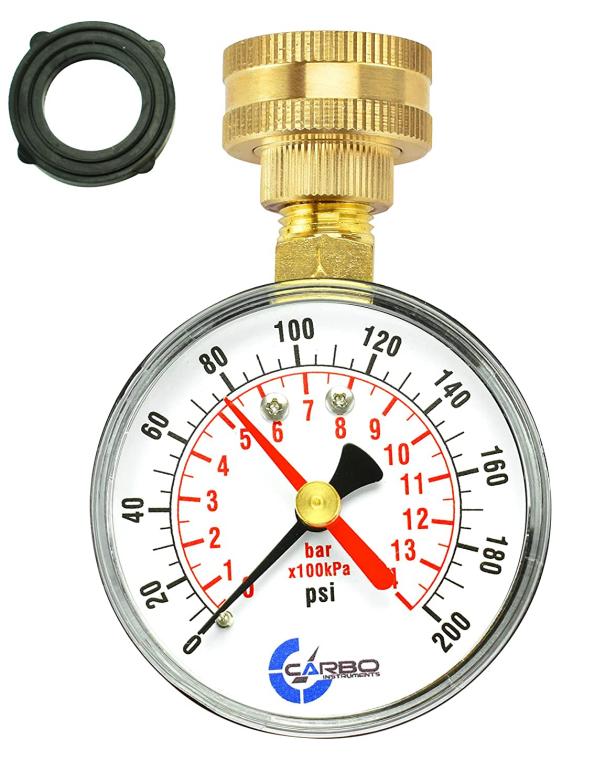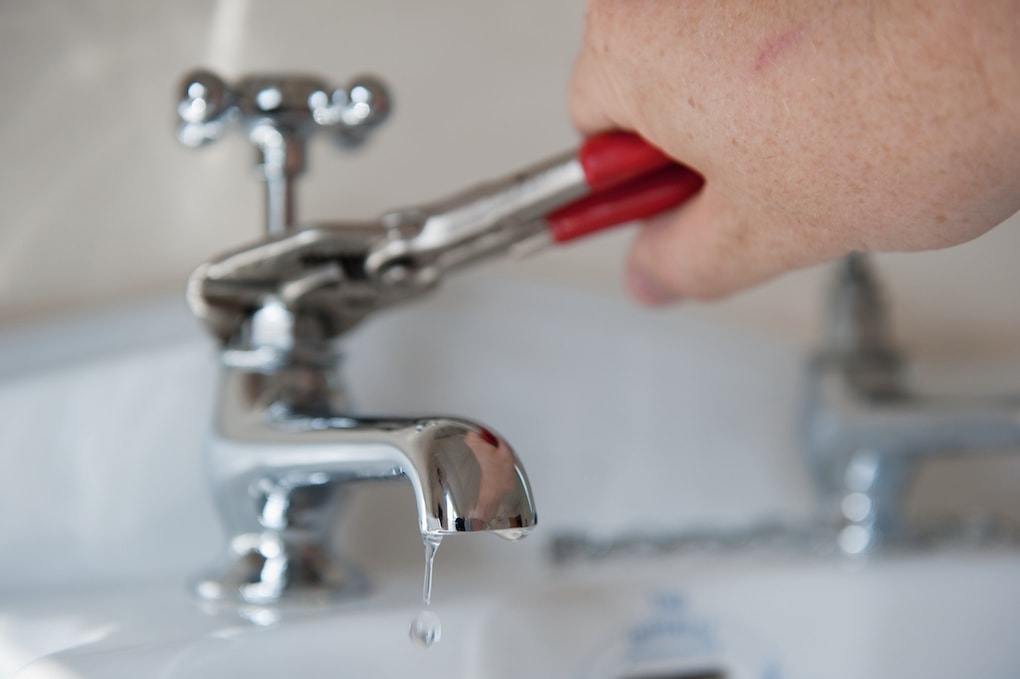Step-by-Step Guidelines for Resolving Low Water Pressure in Your Home
Step-by-Step Guidelines for Resolving Low Water Pressure in Your Home
Blog Article
What are your thoughts and feelings about 10 Reasons for Low Water Pressure in Your House?

Low water pressure in your home can be an irritating problem, affecting whatever from showering to washing recipes. If you're experiencing weak water circulation, there are numerous possible reasons and solutions to discover. In this overview, we'll go over typical factors for low water stress and practical steps to attend to the problem successfully.
Introduction to Low Tide Pressure
Low water stress occurs when the circulation of water from your taps, showers, and various other fixtures is weaker than normal. This can make daily jobs much more difficult and much less effective. Comprehending the causes of low water stress is essential to locating the best solution.
Typical Causes of Low Water Stress
Faulty Pressure Regulators
Stress regulatory authorities are responsible for keeping consistent water pressure in your home. If they malfunction, it can cause low tide pressure or irregular circulation throughout your home.
Local Water System Issues
Often, the problem exists outside your home. Local supply of water issues, such as main line leakages or upkeep job, can briefly lower water pressure in your location.
Pipeline Obstructions
Gradually, pipelines can become blocked with natural resource, debris, or debris, restricting the circulation of water. This is a common issue in older homes with galvanized steel pipes.
Rust
Rust within pipes can cause leaks and decreased water pressure. Corrosion accumulation can constrict water flow, especially in aging plumbing systems.
Just How to Identify Low Water Stress
Examining Pipes
Evaluate visible pipes for indications of leakages, corrosion, or blockages. Take note of any kind of unusual audios, such as knocking or rattling pipes, which can show problems within the plumbing system.
Consulting with a Plumber
If you're unable to pinpoint the cause of low water stress, take into consideration hiring an expert plumber to conduct a comprehensive examination. They can determine underlying concerns and recommend proper solutions.
Checking Faucets and Components
Begin by testing the water pressure at different faucets and fixtures throughout your home. If the problem is separated to certain locations, it might show local troubles.
Do It Yourself Solutions to Deal With Low Tide Pressure
Flushing Water Heater
Debris buildup in the water heater can restrict flow and decrease performance. Purging the storage tank occasionally aids eliminate debris and preserve optimum performance.
Inspecting Stress Regulatory Authority
Guarantee that the stress regulatory authority is working correctly. Changing or changing the regulatory authority can aid bring back correct water stress throughout your home.
Cleaning Up Aerators and Showerheads
Natural resources can accumulate in aerators and showerheads, lowering water circulation. Get rid of and clean these components consistently to enhance water pressure.
Clearing Up Clogs in Piping
For minor blockages, attempt making use of a plumbing snake or chemical drain cleaner to clear blockages in pipes. Beware when making use of chemicals and follow security guidelines.
When to Call a Specialist Plumber
If do it yourself initiatives fall short to resolve the issue or if you believe substantial plumbing troubles, it's ideal to seek aid from a certified plumber. They have the expertise and tools to resolve intricate concerns securely and properly.
Safety Nets to Maintain Water Stress
Setting Up a Pressure Booster
Think about setting up a pressure booster pump to enhance water stress in areas with consistently reduced flow. This can be especially useful for multi-story homes or residential properties with high-demand fixtures.
Tracking Water Use
Be mindful of water usage habits and prevent ill-using the plumbing system. Easy adjustments, such as shocking showers and laundry lots, can aid keep ample water pressure.
Normal Upkeep
Schedule routine upkeep for your plumbing system to stop issues such as corrosion, leaks, and blockages. Addressing minor problems early can help avoid even more considerable fixings later on.
Conclusion
Dealing with low water stress can be frustrating, however determining the underlying reasons and implementing ideal services can recover optimal flow throughout your home. Whether it's cleaning up aerators, inspecting pipes, or talking to a plumber, taking proactive steps can make sure a consistent supply of water for your day-to-day needs.
How to Fix Low Water Pressure In Your Home
Municipal Water Supply Issues
Scheduled maintenance, high demand, and water main breaks are all potential causes for low water pressure within a city or county’s water lines. While there’s not much you can do to personally fix a problem with your city or county’s water supply system, you can play a big role in documenting the issue and alerting those who can.
How to fix it:
Ask your neighbors if they are experiencing any issues with low water pressure. If multiple homes are affected, it’s likely related to the city’s water line. Contact the local Water Authority to see if there is any maintenance taking place that might be affecting your supply. Also let them know of your specific issues. If other homeowners report the same issues, they’ll know that there could be a larger issue to look into. Faulty Fixtures
A damaged or clogged shower head, faucet or appliance is the first thing we’d suggest checking, especially if low water pressure appears to be isolated to a specific area of your home.
How to fix it:
First, turn off the main water supply to your home. Check the affected appliances for build-up or debris. In the case of a faucet, you can simply unscrew the aerator at the tip of the faucet. Showerheads should be fully detached from the water pipe. While the appliances are detached, you may want to check the water supply to determine if the fixtures were in fact the issue. To clean, soak the showerhead or aerator in vinegar and brush off any visible debris. Reattach the fixtures and check the water pressure again. If it is still low, there is likely a deeper issue at hand, which can be determined by a professional plumber. Pipe Obstructions
Mineral deposits, rust or other debris within water pipes can lead to blockages or corrosion over time.
How to fix it:
When you think of a clog, you probably think of a drain clog. While there are many DIY solutions to clearing a drain, clogs in a water pipe will almost always require the help of a professional plumber. A plumber will be able to locate the affected pipe and clean out any debris or mineral deposit buildup. In severe cases, the pipe may need to be replaced. Your plumber might also recommend a water softening system to remove the minerals from your home’s water supply that can contribute to pipe blockages over time.
Plumbing Leak
Undetected water line leaks can divert water away from your residential pipes, reducing the water pressure in your fixtures.
How to fix it:
Check your water meter by turning off all water sources and monitoring the meter for any movement, which could be a clear indicator of a potential leak. Check all visible pipes for signs of leaking, including water stains, active dripping or damp spots around the pipe. Inspect fixtures, including faucets and showerheads, for any drips. Test the pressure but recording the pressure with the main water valve shut off. Leave off for a few hours and test again. A significant drop in pressure is a clear sign of a leak. https://kiddcoplumbing.com/plumbing-blog/how-to-fix-low-water-pressure/

Hopefully you liked our article on . Thank you so much for finding the time to read through our content. Enjoyed reading our blog entry? Please share it. Help another person locate it. Bless you for being here. Return soon.
Call Report this page